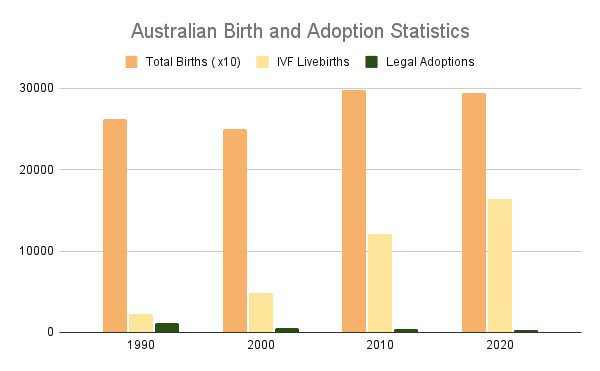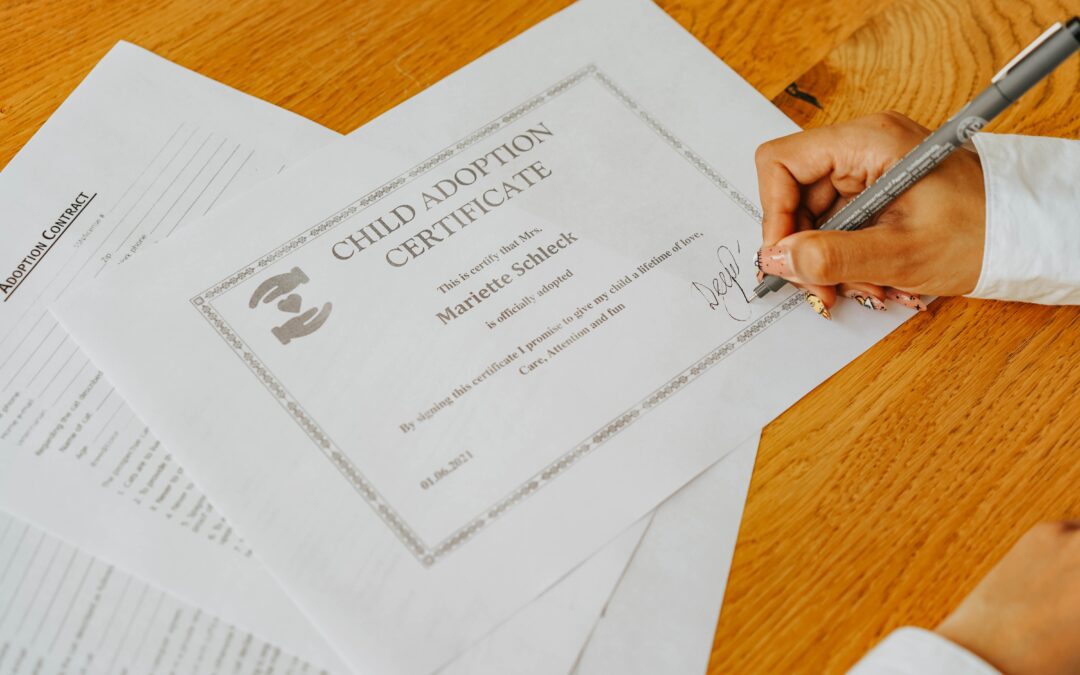The total adoption figure in Australia has hit its lowest since records began in the late 1960s.
The domestic figures plummeted over the last two years with surrogacy arrangements on the rise.
Australia has seen a 63 per cent decline in adoptions over the past 25 year.
Child Protection Australia said there are now other routes to permanent child placements that are quicker and easier to process, with the median wait time for adoption being at least four years.
From 1970 to 1971 adoption numbers were at a peak with 9 798 children finding new homes. That number has dropped to less than 208 adoptions each a year.

Last year in Australia there were over 46 000 children in the foster care system, compared to 43 400 in 2015.
With one in six couples suffering from infertility in Australia, there is a growing preference for services such as IVF and surrogacy arrangements. As of 2022, there were a total of 260 surrogacy arrangements across Australia and New Zealand. According to Surrogacy Australia more than 80 per cent of Australians seeking surrogacy seek out overseas services.
Of the 260 surrogacy arrangements in 2022, 53 per cent were straight couples and 42 per cent were same-sex couples.

Adoption statistics from the Australian Institute of Health and Welfare show that the total median time from approval of an application to the placement of a child was four years. IVF treatments are increasing as the process and time are much shorter than that of adopting a child.
Child Services representative Caitie Sultana, of South Coast Medical Aboriginal Cooperation said the adoption process was difficult for many Australian families.
“Why would someone wait four years when they are put in a pool of people ready to adopt and after the four years they are given the decision to either pull out or “renew,” she said.
The trend to lower fertility suggests social pressures for families to raise children has declined with changes in legislation over who can be involved in adoptions contributing to the decline.
“The process to adopt can actually be quite invasive, they want to know everything about your income, your family life, relationship and so much more,” Ms Sultana said.
“To adopt you even need to go through a psychological appointment to see if you’re mentally fit for a child. It’s quite discouraging……it makes it harder on the system.”
With the process of adoption being lengthy, IVF has proven to be an easier option for couples suffering from infertility. According to a UNSW report in 2019 on IVF treatment in Australia, 88 929 IVF cycles were started in 2019 leading to 16 310 babies being born through the treatment.
A long-term decline in the fertility of younger mothers and the increase in fertility of older mums reflects the shift in attitude towards childbearing. This has resulted in a rise in the median age of mothers to 31.6 years and a drop in Australia’s fertility rate overall.

